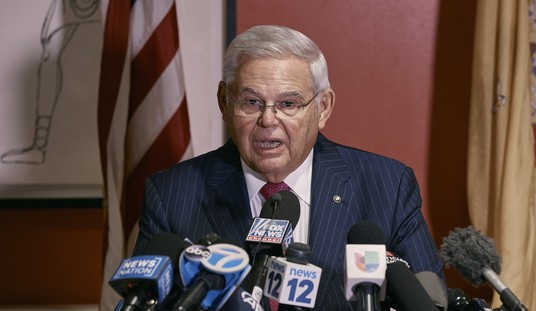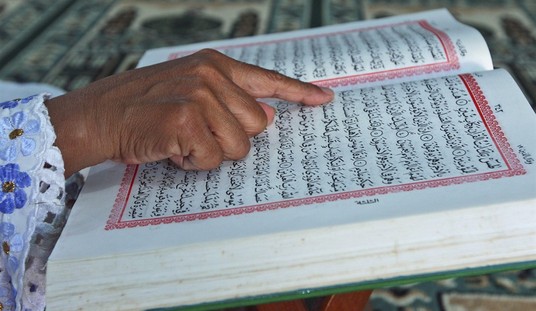President Obama was right when he privately said he risks losing “the entire Democratic Party” over the war in Afghanistan. With public opinion already souring on the war, the president can’t afford much else to undermine confidence in the effort. Now it is known that President Karzai is on and off medication for manic depression and Afghanistan has held parliamentary elections with even more fraud and violence than the tainted “re-election” of Karzai.
This is now the second election in Afghanistan that has its credibility in tatters. The effect cannot be understated: The Afghan people are going to be disenchanted with democracy and an increasing number are going to simply give up on the political process. The voices among the American people saying the war isn’t worth it are going to get louder. At least Americans could point to Iraq’s elections as something beautiful and inspiring. Americans will not be so willing to send their soldiers to die for a government “elected” with excessive fraud and spend money propping it up during a recession.
An estimated 1.2 million fake ballots were cast for Hamid Karzai in August 2009. An undercover BBC reporter was offered voting cards for $10 apiece. Following the election, Karzai unilaterally reconfigured the Electoral Complaints Commission so that he had the power to appoint all five members. There was some hope that this election for 249 members of the lower house of parliament would be different, as 6,000 commission workers from the last election had been banned. By all indications, this election was actually worse.
The overall turnout was only 40 percent, and the Independent Election Commission records turnout of above 100 percent in many districts under Taliban domination. Despite initial attempts to paint the election as more credible and less violent than the last one, the U.S. now admits there were at least 100 more terrorist attacks this time. Videos have emerged allegedly showing ballot box stuffing and selective discarding by members of the police. One organization has documented over 300 incidents of voter intimidation and ballot stuffing at 280 polling stations. Nearly 4,000 complaints have been filed with the IEC, about 1,000 of which have already been labeled as “potentially significant.”
In some Pashtun areas, voter turnout was very low, a reflection of intimidation by the Taliban and an overall lack of enthusiasm. Land routes that were closed between Pakistan and Afghanistan for security reasons were secretly crossed by thousands who may have voted. It is suspected that their movement was facilitated by the government so they could be used to vote for preferred candidates. Printing shops in Pakistan printed thousands of fraudulent voter registration cards on behalf of politicians.
The turnout of the Shiite Hazaras was very high, but don’t get excited. Iran actively funded candidates and it is quite likely that Iran helped mobilize the Shiites for their own interests. It should be remembered how quickly Ahmadinejad and Karzai congratulated each other on their election victories even when manipulation was apparent. Karzai may have gone so far as to solicit him for advice in election tampering.
Iranian support likely went to benefit candidates tied to Gulbuddin Hekmatyar and his Hezb-i-Islami party. Hekmatyar is a long-time friend of the Iranian regime who has received extensive backing from them for years. He isn’t the official leader of the Afghan party, but the candidates openly support him and say the only reason he isn’t their chief is because he’s outside of the country. Hekmtatyar has also cultivated ties to the Taliban and al-Qaeda and is an insurgent leader.
On September 20, the Taliban’s shadow government, called the Islamic Emirate of Afghanistan, bragged that they had foiled the election, carrying out 739 attacks across the country. This number may not be much of an exaggeration. One security firm in Kabul estimates that there were up to 600 attacks and that a “fairly huge amount of polling centers” had been shut down. In one incident, the Taliban laid down a chain around the area of the polling station and refused to let aspiring voters cross. Eleven civilians, three Afghan cops, and 27 terrorists died on election day.
Unfortunately, the democratic culture just hasn’t taken hold in Afghanistan. One account from AOL News reads:
As one Afghan journalist said to me, very few people were voting for the “right” reasons or even truly understand what democracy means. Most were voting along tribal and ethnic lines or perhaps for the local powerbroker or militia leader, for whom the legislative process is simply power politics by other means.
Part of the problem is that political parties aren’t organized or valued. Almost all of the candidates ran as independents and not as part of any type of bloc or collective. As a result, Karzai and his cronies and other figures control the process. Their families own the businesses that can fund campaigns and the government ministries that employ workers. Karzai is the only one with an apparatus to mount a campaign because he controls the government.
Karzai’s opponent in the presidential election, Abdullah Abdullah, has sought to create a democratic political movement in Afghanistan to fill this gap called the National Alliance for Change and Hope. A European government was reportedly interested in helping him, but decided against it when they saw that he was bankrupt and had no real strategy. He boasted of supporting 300 candidates during this last election but admitted he couldn’t support them financially. He strikes an optimistic tone, saying: “We have just laid the foundation for the National Alliance for Change and Hope. That’s very young.” But he has a long way to go to create the dynamics and institutions necessary for a democracy.
The crumbling of Afghanistan’s democracy is a very sad loss. The country is relatively pro-American and is very much against the Taliban. But the fraud in the Taliban-controlled areas indicates there cannot be credible elections until their control is completely wrested. And then the inadequate culture and institutions for democracy will still remain. The National Alliance for Change and Hope is a sign that the desire exists, but there is a long, tough road ahead to an Afghan democracy. And the American people are only willing to travel that road to the next traffic light.









Join the conversation as a VIP Member